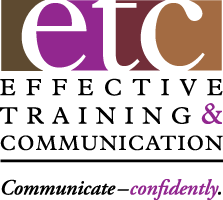(This article originally appeared in the popular Small Business Expert Forum published by Nationally known PR expert Carol Roth. I’m was thrilled to have the opportunity to promote these concepts in such a respected vehicle.)
While millennials have some generation-specific communication preferences, they have a lot more in common with other generations than differences, except for their use of technology. If communicating with them in your workplace presents a challenge, here are five ways to resonate with your 30-somethings readers.
1. Go where they are
- Just like the other generations you face in the workplace, Millennials want you to practice Dr. Tony Alessandra’s ‘Platinum Rule’ and communicate with them the way they want you to … not the way you want them to communicate with you. Sounds simple enough but the devil is in the details.
- So, during new employee on-boarding, discuss their communication preferences as well as yours. That same getting-acquainted process can help indicate what’s important to them, where their values are, etc.
- Also, keenly observe how they communication in return – a strong indication of their preferences.
- If the organization has standards or preferences different than theirs, explain them and their rationales and help them adapt. ‘When at corporate, do what the suits do.’
If the Platinum Rule approach to workplace communication resonates with you and you apply it to the Gen X, Gen Y and Boomers you also may interact with, you’re on your way to making the Varsity Communicator Team. Consider these four other best practices and you’ll qualify for All Star.
2. Embrace Phone Technology.
- They certainly do. Make sure your e-mail messages or other docs are phone friendly – that’s how they’ll read them.
- Keep text messages very short and focused. But, if it’s important to you or your organization to avoid acronyms, abbreviations and sloppy grammar in texts, then be sure to let them know and model that behavior, even if it takes more time.
- Make subject lines helpful for scanning in a hurry. ‘No subject’ is really lame. ‘Meeting’ is better. ‘Project ChoochNet Meeting’ even better. ‘Confirming ChoochNet Status Meeting Tue. Feb. 6th at 10:00’ better yet, even if it took three seconds longer to write.
- To ensure a millennial texter sees longer emails, send a text version of short messages or a note indicating ‘see email – reply needed.’
3. Give them a KISS
- They’re busy with other things they perceive as more important or more fulfilling.
- Keep your message short, simple, interesting and compelling. Don’t use a long word when a shorter word is just as clear or clearer. Don’t use a five-word phrase when one or two words is just as clear or clearer.
- Don’t bore them. Ever.
- They’re always in a hurry so make it easy to skim.
- Reach out. Indicate you’ll follow up shortly to discuss in more detail. Don’t ask them to get back to you unless the value to them is large and obvious. You sent it – you reach out.
4. Stress Value
- Connect the dots for them to answer their ‘WII-FM’ question.
- Why should they read it in the first place and act on it? How does it relate to their view of the world?
- Often, the ‘why’ is more important than the ‘what’, even with some simple procedure or request for information. Try to answer the ‘why’ questions before they think to ask them.
5. Personalize
- They hate generic messages that indicate the sender had no clue who they were or what they might need or prefer. So do you.
- Personalized messages are 10 times more time-consuming to create but are 100 times more effective, efficient and engaging. Do the math.
- Also consider their personality style and how that influences length of messages, tone, language, etc. If your organization doesn’t use DiSC, MBTI or other personality style assessments, check out the free samples on line and try to put each person in one of the quadrants based on the description.
- The only thing worse than a bad email is a good email that should have been a phone call or face to face instead. Put the high touch back in high tech and the social back in social media.
- Periodically assess your results. Ask them if your communication approach is working for them and what else might make it even better. You never know what you’ll get until you ask.
So … resonate with millennials in your workplace with a Platinum Rule approach and keeping your spot on the All-Star Communicator Team you worked hard to earn.
